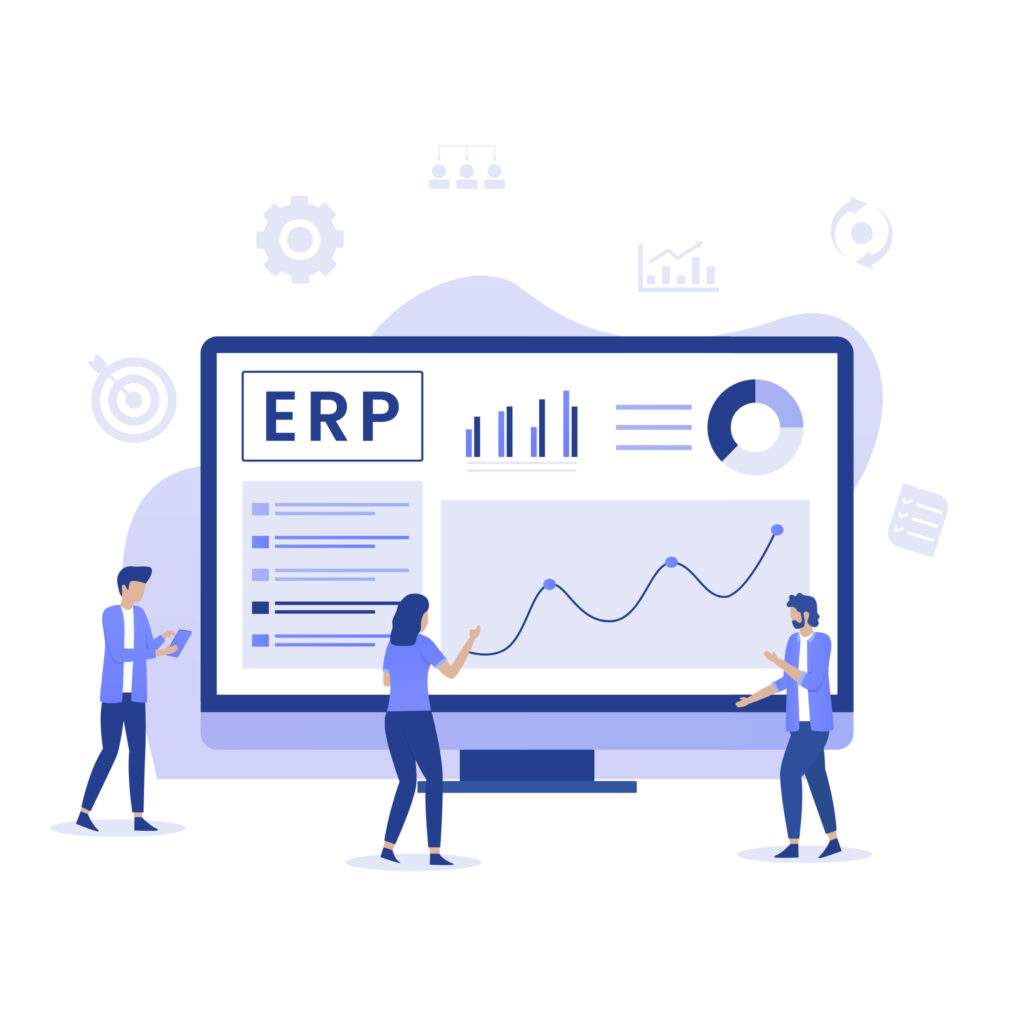I love modular furniture stores. I sit on all of the couches and re-imagine my kitchen as something sleeker and shinier than it ever was. It’s all so intriguing.
When I get home, I suddenly realize that I’m not carrying a chair or a bookshelf. Instead, I’m lugging a large cardboard box filled with long strips of particleboard and bags of bolts. The clouds darken over my furniture dreams and I realize I’m staring into the void of a long afternoon of assembly.

Anyone who has thought about adopting ERP software in the past ten years (or, even scarier, before that) knows this feeling profoundly. Some ERP vendors promise the beautiful coffee table but end up selling what amounts to sticks and twine. When it comes time to get the thing set up, the process requires many person-hours. ERP software implementation can take a village to get up and running.
But those hours can be spent wisely— increasingly, companies are seeing implementation projects go faster and meet their adoption schedules. The data supports it: a Mint Jutras study commissioned by Ultra Consultants found that only 11% of companies surveyed failed to go live in the time allotted by solution providers. In fact, 62% of respondents said they went live in either the time allotted or sooner than expected.
Timely implementation and onboarding require planning, communication, technical expertise, and follow-through. Each party, vendor and customer, expect those qualities from one another. Successful software implementation, however, is all about relationship building. Because everything is.
Building great relationships

Software subscribers enter into a relationship with vendors from the point of first contact. That relationship doesn’t end during a sales handoff. It doesn’t end during implementation planning. And it doesn’t even end when the subscriber is happy and seeing optimal value from the software. The truth is: it never ends. And that’s a good thing.
Continuing to build your relationship through the process of implementation will not only help you in the long run, providing a channel of ongoing, open communication. It will also expedite your project.
You don’t want your business to sacrifice time when preparing for an ERP software implementation. Here’s how to create a plan that will strengthen your vendor relationship while making sure you avoid overrun on your project timeline.
Understand your goals
What are you trying to accomplish by adopting ERP software? Integration, data transparency, accurate reporting, and real time decision-making are among some of the biggest reasons companies adopt all-in-one solutions. They’re also fairly abstract. Think about what kind of return you expect, and what level of investment you’re willing to make.

Overall, you should be able to answer this question: what will my company look like after I adopt an all-in-one business software? The picture you have in your head might not be 100% realistic, but starting there can help you articulate viable goals.
Decide where you want to begin
Very few companies begin an ERP implementation by adopting everything at once. Even for small businesses, adoption makes the most sense in stages. Given that, it’s important to prioritize the features and processes you’ll adopt first based on your goals. Many companies start with their accounting data, while others are more interested in projects or HR. It’s up to you, of course, to determine how your priorities will fit into your roadmap. Your vendor can give you recommendations, if necessary.
Let your vendor ask the tough questions
Don’t hide anything from your solution provider. You wouldn’t keep important information from your doctor— doing so would interfere with your health. For the same reason, whatever you don’t tell your vendor will come back to haunt you either during or post-implementation.
Your solution provider may ask you some tough questions about your operations. Admitting that you don’t have great answers to everything can be hard, and might feel humbling. But like your doctor, your software vendor is ultimately just trying to help. Understand, then, it’s okay to say that you don’t know the answer to something, or that you don’t have a certain process in place. Just recall the reason you’re looking for new software in the first place.
Provide feedback early and often

As you move through the implementation process, let your solution provider know how they’re doing. What’s working and what isn’t? It’s better to be involved, or task someone with continual involvement, than to sit back and assume everything will go as planned. Because ERP implementation is fundamentally about relationships, honoring your part will help your solution provider move quickly and accurately through the process of meeting your requirements.
Conclusion
The responsibility of a successful ERP software implementation lies equally with both you and your solution provider. Turning that responsibility into a strong relationship will most certainly enable a timely and affordable software adoption.
Your relationship begins the first moment you pick up the phone or pursue a free trial version from your vendor. While they will certainly reach out to you, the extent to which you’re able to reach back will make all the difference. You’ll be able to achieve your goals without feeling like you’re involved in assembling the world’s most complicated piece of furniture.

